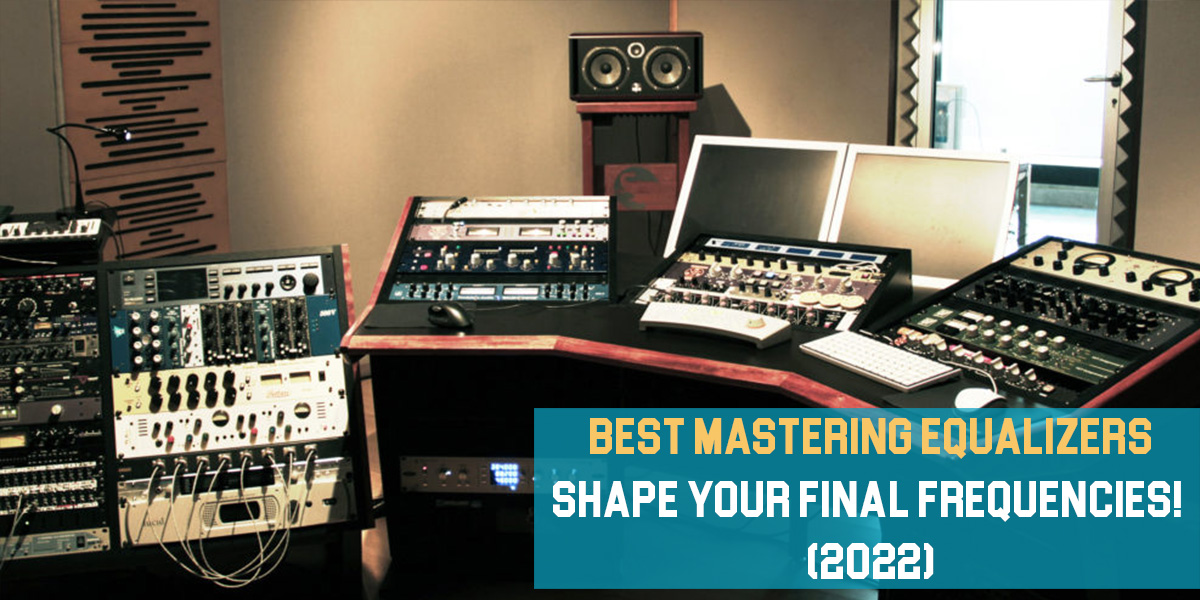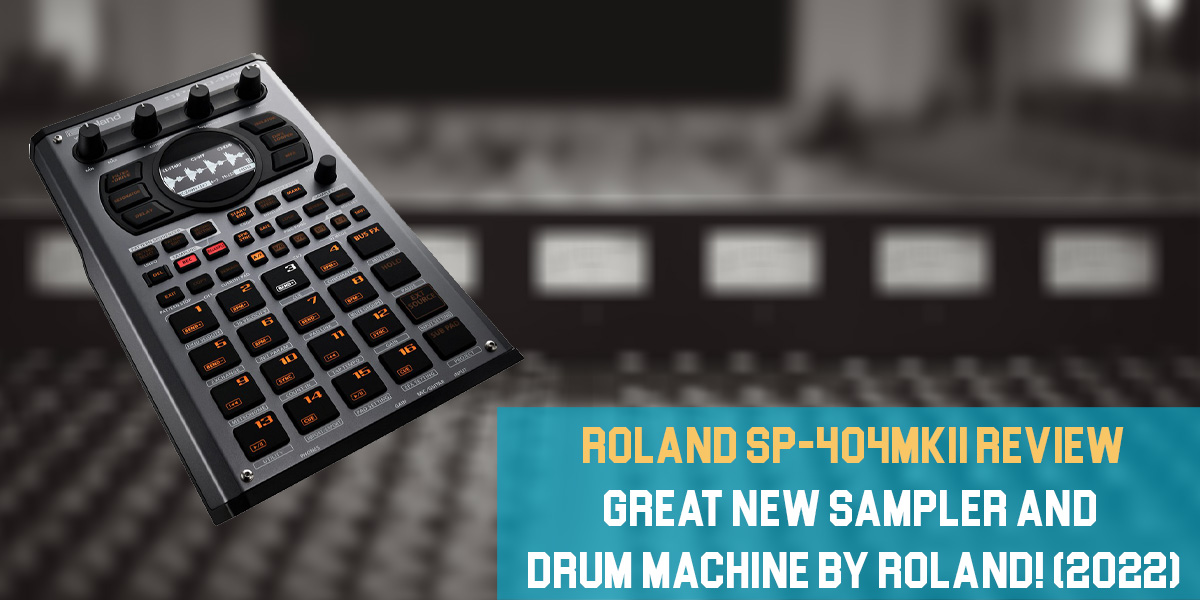Best USB Microphones
Introduction
USB microphones are a great alternative to traditional XLR mics because they’re easy to use and usually very affordable. That’s why so many people choose these simple plug-and-play options.
How do USB mics work? Just like any other microphone, USB mics are transducers—they convert sound (mechanical wave energy) into audio (electrical energy). The analog audio signals are then amplified and converted into digital signals inside the USB mic’s built-in audio interface, and sent out through a USB connection.
Because of this, USB microphones need to have an analog-to-digital converter built right in. This converter changes the analog signals from the mic’s element into digital signals for the output.
So, you can think of a USB microphone as a mic with a built-in digital audio interface that connects to a computer (or any digital audio device) using a USB cable.
Just a heads up—we’re listing these best USB microphone reviews in no particular order. The list is randomized, so we’re not ranking them from best to worst.
Listed below are our Top 11 Best USB Microphones:
1. Rode NT-USB
The Rode NT-USB is, without a doubt, one of the best USB microphones you can get for under $200. It delivers exceptional sound quality for a USB mic, without the need for special drivers or extra third-party tools. It’s also not overpriced, offering a sturdy, well-built design with high-quality components.
The Rode NT-USB produces outstanding sound, thanks to its top-notch cardioid capsule in a classic studio setup—just with a USB interface. The sound is pure, clear, and transparent, without the usual issues like popping or sibilance.
The proximity effect is minimal, and it works well from many angles—so you won’t have to struggle with positioning. We’ve also noticed that the Rode NT-USB is less prone to picking up vibration noise, even with the included tripod. For the best results, you might consider an extra suspension kit and shock mount, but honestly, the tripod works far better than expected.
Overall, this mic is fantastic. It’s affordable, yet it easily outperforms rival models. The Rode NT-USB is, hands down, the best microphone choice right now. When you compare it side by side with other computer mics, you’ll immediately notice the difference. It has no real disadvantages, is simple to use, and most importantly, delivers top-quality sound. It’s impossible not to want it.
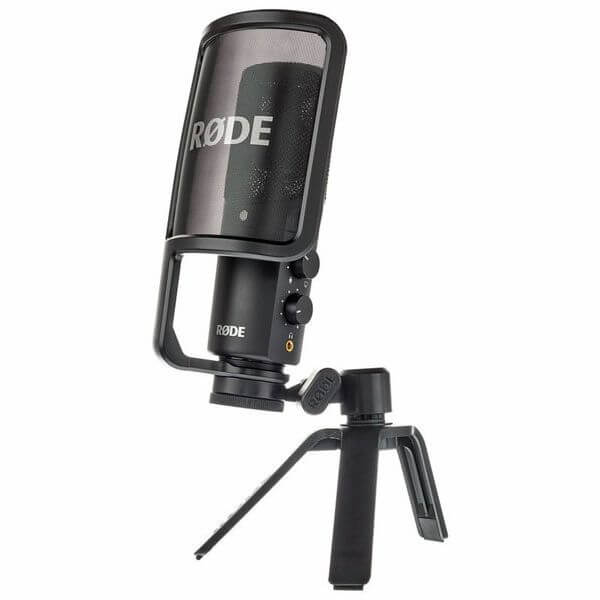
- Dynamic range: 96 dB
- USB powered (5V DC)
- Dimensions: 184 x 62 x 50 mm
- Weight: 520 g
Rode NT-USB |
2. Apogee HypeMiC
The Apogee HypeMic is a cardioid condenser microphone, making it ideal for single-point audio recording. What really sets this product apart is its USB connectivity, allowing you to plug it directly into your laptop or iOS device (Lightning adapter included) and start recording right away. Its portability makes it super convenient for anyone on the move.
What distinguishes the Apogee HypeMic from other USB microphones is its built-in analog compression. This feature lets you achieve studio-quality recordings at a more accessible price—plus, you get the ease of USB connectivity.
While you’ll pay more for this mic than the average USB microphone, it’s still much less expensive than a full studio microphone. Even so, you get 24-bit, 96kHz audio recording—something most other USB mics can’t offer.
The included kit features a tripod, a pop filter, and a high-quality carrying case, so you’re ready to record anywhere. The HypeMic is designed with musicians in mind and is especially useful if you often record in different locations.
Although the price is higher than other USB mics, it remains relatively affordable when you consider how close it gets to true studio quality without studio-level pricing. Whether you’re a professional or just starting out—maybe podcasting, vlogging, or making music—this could be an excellent choice.
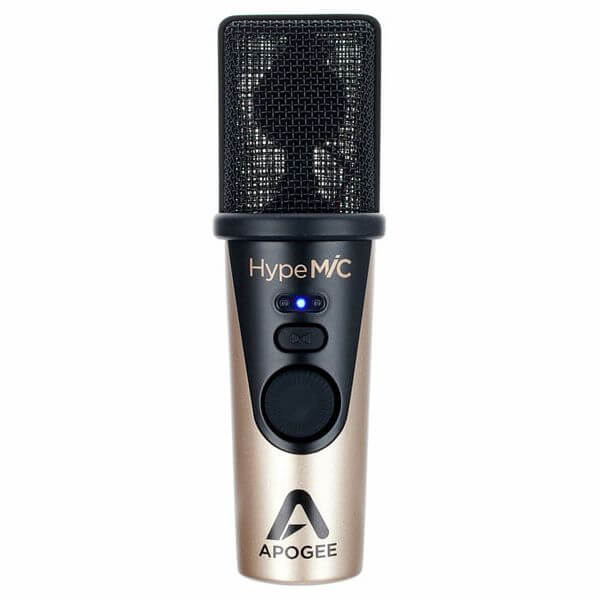
- Blend function for latency-free interception
- Micro USB port
- Dimensions: 124 x 38 x 38 mm
- Weight: 200 g
Apogee HypeMiC |
3. Earthworks Audio ICON
Earthworks Audio has long been known for its professional studio microphones, but USB mics for podcasters and gamers are a whole new territory. Priced at around $349, the Earthworks Audio Icon sits at the higher end of its category. However, if you judged by looks alone, it might be worth every penny, thanks to its striking, webcam-friendly design.
When it comes to audio quality, the Icon is a single-pattern (cardioid) condenser mic that doesn’t use any digital signal processing (DSP), delivering a relatively clean signal. It’s ideal if you’re comfortable using EQ and compression during mixing and want a mic that looks great on camera.
Most of the USB mics we test are much cheaper than the Icon, and they often feel and look that way—plastic is a common material. In contrast, everything about the Icon feels thoughtfully designed. The mic itself is stunning, made from shiny stainless steel with dramatic cutaways and a grille that perfectly matches the enclosure’s finish.
Inside, the cardioid-pattern 10mm diaphragm offers a frequency range of 20Hz to 20kHz and can handle sound levels up to 132dB SPL. It records at 16-bit depth and a 48kHz sample rate. Nearly every other mic mentioned in this article exceeds those specs, so considering the Icon’s price, this is a notable shortcoming.
For the money, the Earthworks Audio Icon gets the important things right. It delivers professional, DSP-free audio that isn’t heavily processed. This means it’s not for beginners or those who are used to mics with built-in presets.
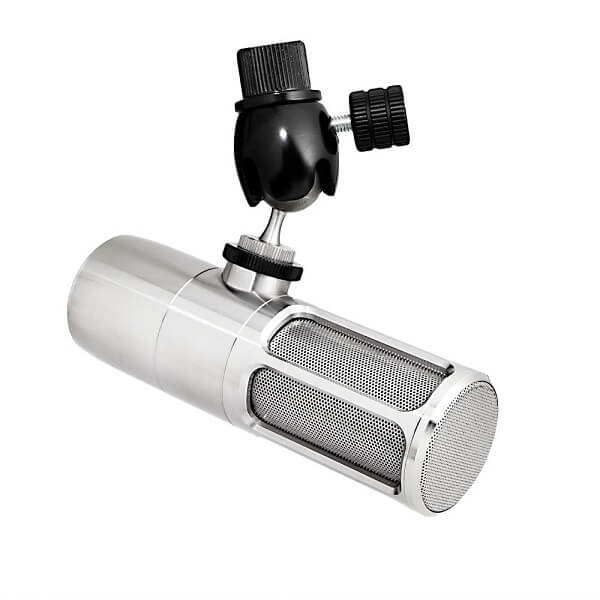
- Power supply: USB bus-powered
- Dimensions (L x D): 141 x 41 mm
- Weight: 680 g
- Color: Stainless steel
Earthworks Audio ICON |
4. AKG Lyra
The AKG Lyra is a truly first-rate and well-designed USB condenser microphone for its price. It’s quite versatile and comes with impressive specs. If you don’t mind it picking up a bit of background noise, it’s a very solid option to consider.
The AKG Lyra’s sensitivity and multiple polar patterns are very useful. For example, you can be relatively far away from the mic when speaking (much further compared to dynamic mics). It can also easily pick up several people talking when you use its ‘wide stereo’ capture mode.
The AKG Lyra has four buttons. On the front, you’ll find a headphone volume control and a mute button. On the back, there’s a dial to select the polar pattern and another for mic gain. On the bottom of the AKG Lyra, you’ll find a USB-C port and a 3.5 mm headphone jack. It also comes with a built-in (removable) desk stand, but the mic can be mounted on a boom arm or a regular mic stand if needed.
It offers 24-bit depth as well as a 192 kHz sample rate, which is impressive. The sound quality is on par with, or better than, most high-quality USB mics. Overall, the AKG Lyra is a top-notch USB mic with an excellent design.
This mic performs very well and offers great flexibility for recording on a budget. However, if you’re thinking about getting a condenser mic like this, remember to keep the potential for background noise in mind.
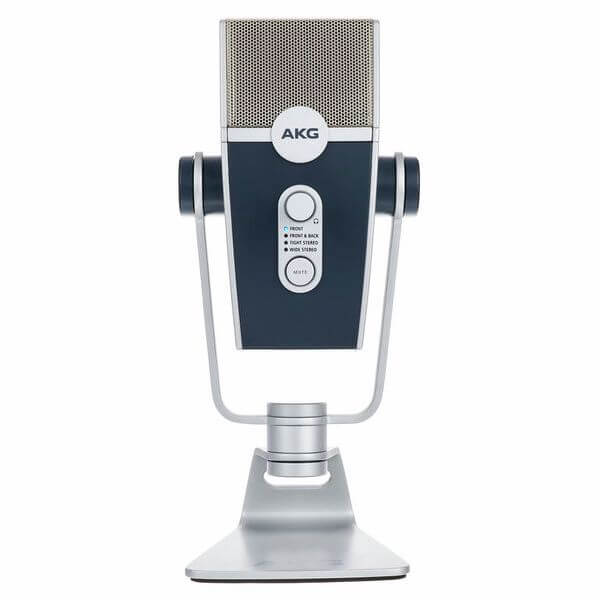
- USB 2.0
- Incl. 2 m USB-C to USB-A cable
- Current consumption: 75 mA via USB
- Weight: 1 kg
AKG Lyra |
5. Rode Podcaster
The Podcaster comes in a classic broadcast-style design, featuring a grille that wraps around the top of the mic. However, the body itself is a bit more unique—it has a hefty 1.5-pound build with a glossy white finish, rather than the metallic look you usually see.
While the mic, which measures about 8.5 by 2.2 by 2.1 inches (HWD), has a sleek, professional appearance, it also has some clever features. Inside, there’s a shock mount to keep the 28mm neodymium dynamic capsule from picking up unwanted vibrations, as well as an internal pop filter.
In other words, the two most important accessories that are typically sold separately—and not always included in the base price—are built right into the microphone itself.
The Podcaster uses a cardioid pickup pattern and offers a frequency range from 40Hz to 14kHz, with a fixed 18-bit resolution and a sampling rate that ranges from 8 to 48kHz. You can adjust these settings from your computer or recording software. Since the Podcaster is an end-address mic, make sure your stand is sturdy enough to support its weight when angled toward the speaker.
To sum it up, the Rode Podcaster isn’t a cheap microphone, but it still offers excellent value. It’s well-made, thoughtfully designed, and captures a version of your voice that sounds great.
With its built-in pop filter and shock mount, you won’t need much extra gear to get the most out of it, and the USB connectivity means you just need the mic and a laptop to start your own podcasting journey.
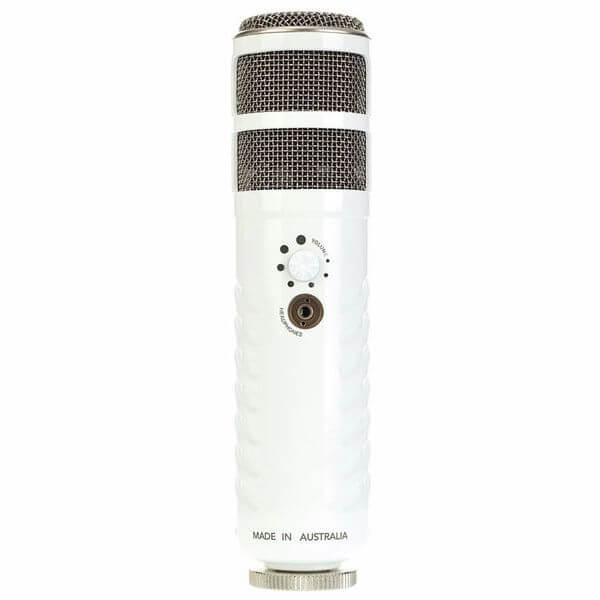
- With a dynamic large-diaphragm capsule
- A/D-D/A Conversion is done in the microphone
- Adjustable headphone amplifier with 3.5 mm jack socket integrated
- Directional characteristics: Cardioid
Rode Podcaster |
6. Audio-Technica AT2020 USB+
This is a superb, high-quality plug-and-play mic that connects directly to your computer or laptop via a USB port. Its ease of use makes it a perfect choice for home studios and field recording. The Audio-Technica AT2020USB+ goes even further by delivering outstanding sound quality, rivaling more expensive studio microphones.
The AT2020USB+ produces crisp and clear sound compared to other models in the same price range, making it a clear winner. The mic has a smooth frequency response that adds a musical quality to its sound. This is truly one of the best frequency curves you’ll find on a USB microphone.
On a side note, the USB interface itself has limited capacity, which can affect the upper end of the frequency spectrum. Because of this, the XLR version of the AT2020, which uses the same capsule, may deliver an even crisper response.
One main advantage is its headphone output, which allows for zero-latency monitoring—a valuable feature for anyone doing multi-track recording. The AT2020USB+ also has two additional controls: one for adjusting the headphone output volume, and another for mixing the microphone signal with pre-recorded audio.
You can easily make one sound more prominent than the other and adjust the mix however you like. The monitor output delivers excellent quality too, especially when paired with a good set of headphones.
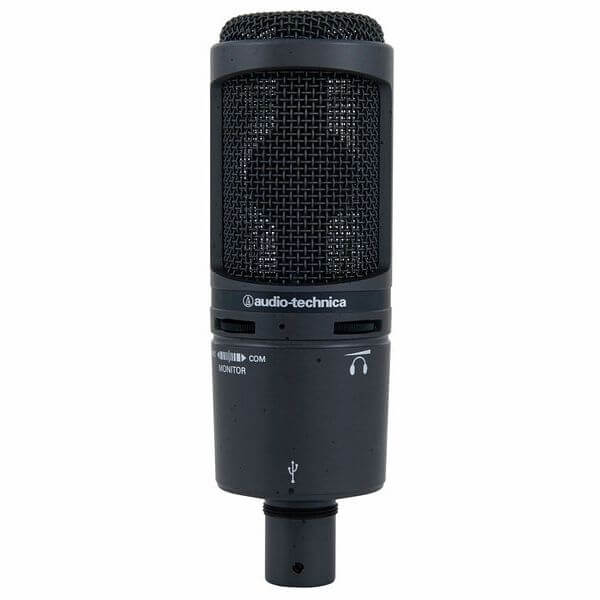
- Frequency range: 20 – 20000 Hz
- Maximum SPL: 144 dB
- Headphone adapter with volume control
- Table stand, mount and 3.1 m USB cable
Audio-Technica AT2020 USB+ |
7. Apogee MiC Plus
Like most of our favorite USB microphones, the MiC Plus doesn’t use any DSP (digital signal processing) before converting audio to digital, and it sounds fantastic. You can plug it directly into a Mac or Windows PC, or use it right away with iOS devices. If you’re considering buying it, your next question might be whether you should get the Apogee HypeMiC instead, which includes adjustable analog compression in its signal chain.
Under the grille, you’ll find a straightforward USB mic design, featuring a gain knob (which also works as a mute button) with three multicolor status LEDs above it. There’s a 3.5mm headphone jack on the bottom panel, along with a USB port.
A Blend button, located between the gain knob and the status LEDs, lets you adjust the headphone mix between hearing more of your mic signal or more of your computer’s audio. This feature makes it easy to quickly raise or lower your mic headphone levels compared to the audio from your project. The status LEDs double as level indicators when you adjust the gain. Changing the gain is as simple as turning the knob on the front of the mic.
As mentioned before, there’s no DSP here, so the 24-bit/96kHz signal has zero compression or EQ added to the mix. Apogee’s reputation is built on its audio interfaces that excel at analog-to-digital conversion.
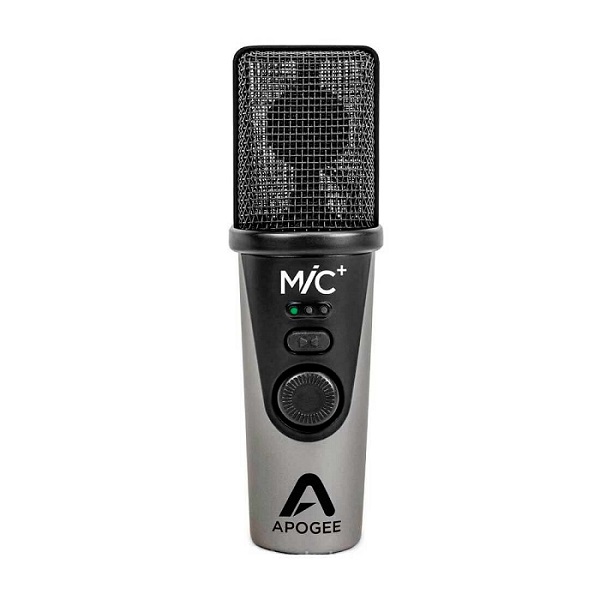
- For iOS, Mac and Windows
- PureDIGITAL connection for sound quality up to 24-bit / 96 kHz
- Dimensions: 124 x 38 x 38 mm
- Weight: 0.2 kg
Apogee MiC Plus |
8. AKG Ara
The AKG Ara has two connection points on its bottom: a 3.5mm analog audio output for headphones and a USB-C port for connecting to your device. It comes with a two-meter USB-C to USB-A cable included in the box.
To sum up, the Ara is designed for simplicity and consistently delivers a maximum digital audio quality of 24-bit/96kHz. However, the Ara does not offer no-latency monitoring of the microphone input through the headphone output.
Most USB streaming microphones include this feature because it’s very helpful to hear what you’re saying into the mic in real time through your headphones, especially when recording or streaming live. Without no-latency monitoring, you’ll have to rely on computer software to listen to your microphone, which can cause an annoying delay between what you say and what you hear in your headphones.
Thanks to its two internal condenser capsules (the components that capture sound), the Ara offers two selectable microphone pickup patterns using the top knob: Front and Front & Back. The Front mode, also known as the cardioid pattern, focuses on sound directly in front of the mic and is ideal for recording a single person.
Meanwhile, the Front & Back mode (also called omnidirectional) captures sound from all around the mic. This makes it well-suited for recording two or more people sitting across from each other or around a table, or for capturing groups of musicians or singers.
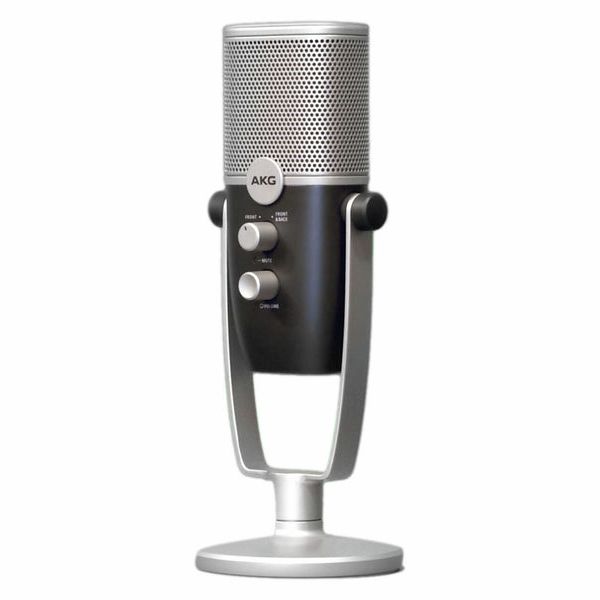
- Power Source: USB bus powered
- Dimensions: 9.05″ x 3.58″
- Weight: 1.46 lbs.
- Included Accessories: Threaded Mic Stand Adapter
AKG Ara |
9. SE Electronics Neom
The NEOM USB is designed for all kinds of recording artists—whether you’re a musician, blogger, or podcaster. With its plug-and-play setup, sE promotes this microphone as a perfect solution for creators on the move. Its user-friendly design makes it easy to capture professional-sounding audio in any environment.
Delivering impressive sound quality, the microphone records at up to 24-bit/192kHz. Featuring a cardioid polar pattern and a 16mm capsule, the NEOM USB captures more of the sound you want while minimizing unwanted background noise. This lets creators record high-quality ideas the moment inspiration strikes.
The USB port is conveniently located at the base of the microphone, while the rear panel includes a mini-jack output for headphone monitoring. The front of the device is kept simple, with three knobs that give users complete control over microphone gain and playback levels, making it easy to adjust headphone volume without hassle.
Inside, the microphone uses a 16mm back-electret condenser capsule that offers a cardioid pattern and a mostly flat frequency response, with a slight boost around 120Hz and another at about 12kHz. This frequency response makes it ideal for voices and podcasting, or as a clear mic to quickly record instrumental ideas—whether you’re playing an acoustic instrument or recording in front of a quiet amplifier.
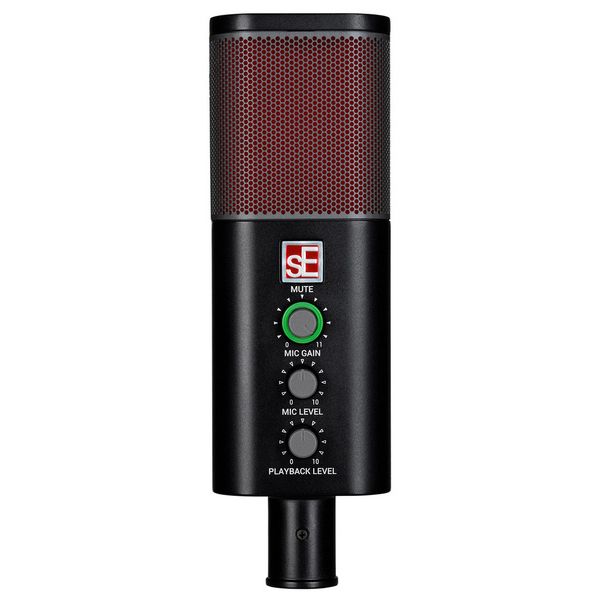
- Compatible with PC/Mac/iPad/Android
- Dimensions: 174 x 56 x 40 mm
- Weight: 0.4 kg
- Incl. table stand, microphone clamp and USB C to USB A cable
SE Electronics Neom |
|
10. Shure MV7
The Shure MV7 is sure to be loved by skilled podcasters, streamers, and DIY musicians alike. It features a headphone jack along with both XLR and MicroUSB outputs, all of which can be used at the same time.
The touch panel looks cool, although it feels a bit out of place on this classic microphone design. We found that it’s less effective than traditional knobs, dials, or switches. Adjusting the volume while speaking is tricky, since it takes two hands—one to hold the mic and another to slide along the touch panel.
Although the process isn’t difficult, the problem is that touching the mic can introduce unwanted noise into your recording. If you need to change your gain, make sure the mic is steady before you start recording again.
You can also adjust the microphone’s frequency response with three presets: Dark, Natural, and Bright. Other features include basic controls like a mic mute toggle and a monitor mix slider, which lets you raise or lower the loudness of your voice in your headphones. If you consider yourself more of a pro, you can switch over to manual mode.
The Shure MV7 uses a dynamic cartridge with a cardioid pickup pattern, resting on a shock mount. Dynamic microphones can handle a bit of rough use without internal damage, and they’re less sensitive than condenser mics.
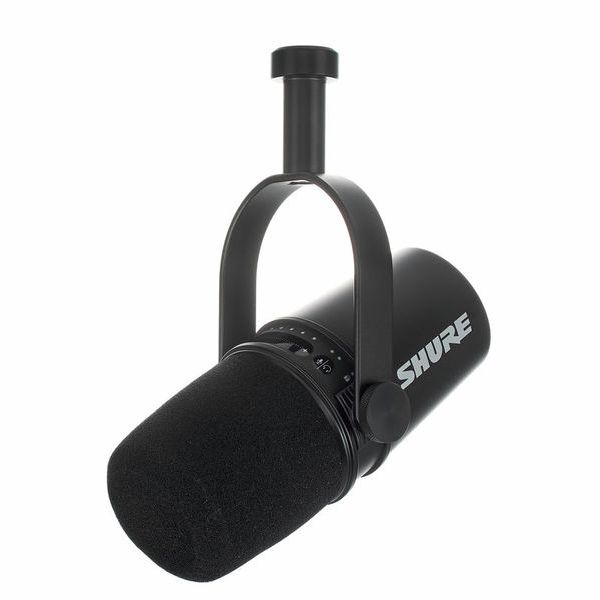
- Dimensions microphone (Ø x L): 66.5 x 53.6 mm
- Dimensions microphone in the bracket (H x L x T): 164 x 153.6 x 90.2 mm
- Weight: 550 g
- Colour: Black
Shure MV7 |
Best USB Mics – Latest Additions
11. Audio-Technica AT2040USB
The newest USB microphone on the market, as of this update, comes from Audio-Technica—a brand well known for making quality mics.
This mic features a mostly all-metal design, a 24-bit/96 kHz sampling rate, and a hypercardioid pickup pattern, along with a high-resolution A/D converter. That last feature helps isolate your voice from background noise in your environment.
While its frequency response is somewhat narrow, the AT2040 is perfectly adequate for spoken voice, with a response range of 80Hz to 16KHz. You wouldn’t use this mic for bass or drum recordings, so missing the frequency extremes isn’t an issue here.
The mic captures vocals with a warm, clear sound. Thanks to its low sensitivity, recording up close doesn’t result in boomy bass—even though there isn’t a bass roll-off switch.
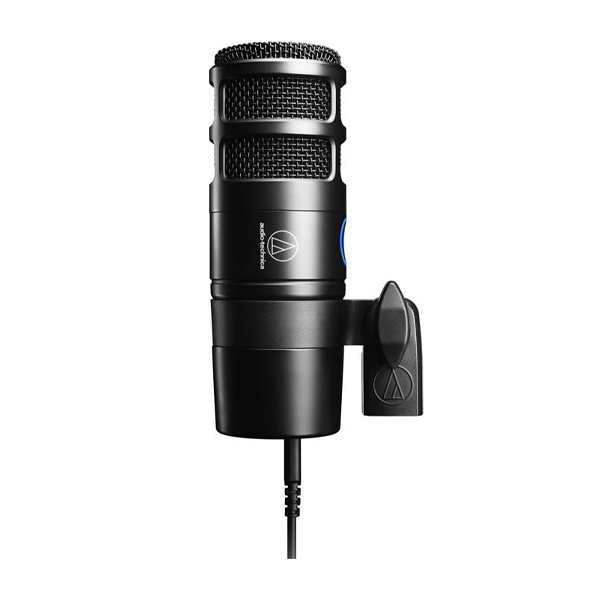
- Connector: USB Type-C
- Power Source: USB bus powered
- Dimensions: 5.72″ x 2.05″
- Weight: 1.35 lbs.
Audio Technica AT2040USB |
Conclusion
We understand that a USB microphone might not be your first choice for studio recording or music production. However, it’s a great alternative for streamers, gamers, and podcasters. With their affordable prices and solid quality, USB mics are the best buy for these types of uses.
The plug-and-play feature means you don’t have to worry about installing extra software or complicated setups—you can start using them right away. Personally, if I were to start a podcast, I’d probably choose the Shure MV7 or the Rode Podcaster from this list, as I think these are the top choices for USB microphones.
If you have any questions about USB microphones or the models we mentioned, feel free to ask in the comment section below. We’ll be more than happy to help!
{ “@context”: “https://schema.org”, “@type”: “ItemList”, “name”: “Best USB Microphones: Top 11 USB Mics! (Updated 2023)”, “description”: “We have compiled a list of the best USB microphones available today. These mics are perfect for podcasters, streamers, and music lovers!”, “itemListElement”: [ { “@type”: “ListItem”, “position”: 1, “name”: “Rode NT-USB”, “url”: “https://themixingtips.com/best-usb-microphones/#1_Rode_NT-USB” }, { “@type”: “ListItem”, “position”: 2, “name”: “Apogee HypeMiC”, “url”: “https://themixingtips.com/best-usb-microphones/#2_Apogee_HypeMiC” }, { “@type”: “ListItem”, “position”: 3, “name”: “Earthworks Audio ICON”, “url”: “https://themixingtips.com/best-usb-microphones/#3_Earthworks_Audio_ICON” }, { “@type”: “ListItem”, “position”: 4, “name”: “AKG Lyra”, “url”: “https://themixingtips.com/best-usb-microphones/#4_AKG_Lyra” }, { “@type”: “ListItem”, “position”: 5, “name”: “Rode Podcaster”, “url”: “https://themixingtips.com/best-usb-microphones/#5_Rode_Podcaster” }, { “@type”: “ListItem”, “position”: 6, “name”: “Audio-Technica AT2020 USB+”, “url”: “https://themixingtips.com/best-usb-microphones/#6_Audio-Technica_AT2020_USB” }, { “@type”: “ListItem”, “position”: 7, “name”: “Apogee MiC Plus”, “url”: “https://themixingtips.com/best-usb-microphones/#7_Apogee_MiC_Plus” }, { “@type”: “ListItem”, “position”: 8, “name”: “AKG Ara”, “url”: “https://themixingtips.com/best-usb-microphones/#8_AKG_Ara” }, { “@type”: “ListItem”, “position”: 9, “name”: “SE Electronics Neom”, “url”: “https://themixingtips.com/best-usb-microphones/#9_SE_Electronics_Neom” }, { “@type”: “ListItem”, “position”: 10, “name”: “Shure MV7”, “url”: “https://themixingtips.com/best-usb-microphones/#10_Shure_MV7” }, { “@type”: “ListItem”, “position”: 11, “name”: “Audio-Technica AT2040USB”, “url”: “https://themixingtips.com/best-usb-microphones/#11_Audio-Technica_AT2040USB” } ] }
